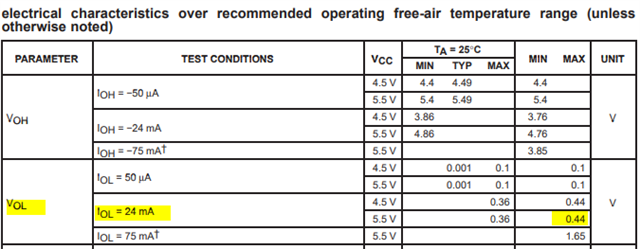Other Parts Discussed in Thread: UCC27517A-Q1, SN74ACT244-Q1, UCC21750-Q1
Hi Team,
I am Andy Robles working as application engineer for High Power Drivers. We have a customer using the SN74AHCT244-Q1 as a buffer to convert 3V MCU PWM signal into 5V PWM signal to drive our gate drivers.
We ran into an issue with the gate driver than can be fixed with increasing the capacitance at the gate driver PWM input signal, but in order to keep similar RC constant we need to reduce the resistance for which the buffer is starting to become a limiting factor. In the SN74AHCT244-Q1 datasheet abs max section it is mentioned that the device is rated for max +/- 25mA continuous output current.
- Since the output of the buffer is a PWM driven RC the peak current would not be DC, but rather be a pulse peak current of up to 250mA at up to a 50kHz frequency. Would this buffer be okay with such pulse current?
- Is there any other P2P device with higher current ratings that we could position here instead of the SN74AHCT244-Q1?
Best regards,
Andy Robles


